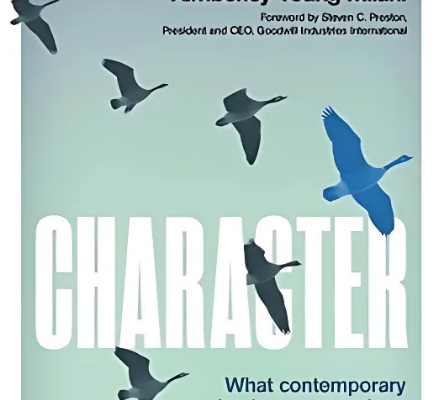In the past decade, homebuyers have benefited from ultra-low interest rates. However, since March of 2021, that story has changed….and quickly. Rising prices – from grocery store shelves to the gas pump – inflation has soared to levels not seen since 19821. In turn, the Bank of Canada has been raising interest rates to tame inflation.
What’s driving rising rates?
According to the latest statement from the Bank of Canada, inflation is driven on two fronts – globally and domestically. Higher commodity prices (e.g. oil, wheat, lumber), supply chain issues since the pandemic, and increased shipping costs are global issues that are impacting Canadians. Here at home, businesses are experiencing widespread labour shortages. With demand running ahead of supply, businesses are passing on higher costs to consumers. This is where increased interest rates come in. The Bank of Canada raises interest rates to make it more expensive for households and businesses to borrow money. This slows the desire to spend and gives supply a chance to catch up.2 The goal is to stabilize inflation – which is good for both the economy and your finances.
Rising rates and mortgage rates
One of the biggest impacts of higher rates is on a person’s mortgage. For many, their house is the biggest asset they own and their mortgage is often their greatest debt and where a large portion of their personal income is spent. The best way to illustrate how rising rates can impact mortgage costs is through an example. Below, we illustrate the difference in interest cost of an individual taking out a mortgage in January 2021 versus today.

Note: quoted interest rates are for example purposes only.
Clearly, rising rates over the last few years have significantly increased the costs of borrowing. Especially over the long-term. Fixed or variable? With the mortgage rate landscape changing drastically, the most common question we get is: should I ride out my variable mortgage or lock in to a fixed mortgage? For some, the answer lies in the middle: both. The goal for most is not only to pay off their mortgage as quickly as possible but also as efficiently as possible. In other words, how do I pay the least amount of interest with the cash flow I have available, while not forgoing other return opportunities? This comes down to risk trade-offs. Previously, in a low-rate environment, it was easier to assume the interest rate risk of a variable mortgage, especially where rates were stable and low for long periods of time. In a rising rate environment, the risk that increasing debt cost outpaces income and cash flow, means you might consider splitting your mortgage into multiple segments in order to minimize the risk of future rate increases. We call this approach mortgage laddering. For example:

Note: Rates quoted are for example purposes only to illustrate the strategy. Please consult with a mortgage lender for actual rates.
This strategy allows you to spread your interest rate risk between variable and fixed mortgage rates, as well as different term periods, so you don’t need to predict where rates are headed.
If rates rise, you will benefit from having locked-in a portion of your mortgage while taking advantage of lower rates on the variable component in the short term.
If rates fall, you will benefit immediately on the variable component as well as have the opportunity to lock-in further at lower rates when the shorter duration portion of your mortgage renews.
Whether fixed or variable, higher interest rates mean higher loan costs. A mortgage ladder strategy may also have additional fees, so it’s important to assess your personal financial situation before making a decision.
This approach hedges your risk and is a concept similar to a bond or GIC ladder investment strategy. This is when you spread your fixed income portfolio across multiple bonds with different maturity dates to diversify and spread the risk along the interest rate curve to hedge against any moves in rates.3
Seek independent advice
to find out what options are ideal for you as part of a holistic financial plan. Our can help you determine whether you should lock-in rates, or consider a mortgage laddering approach. We get to know your unique circumstances and goals to create a plan that will tackle your personal debt situation with strategies that can help you pay your mortgage off as quickly and effectively as possible. With many mortgage products to choose from, we leverage our relationships in the industry to help you decide which solution will be best suited to your needs.
Speak with your lending professional for advice on your personal situation and whether this strategy is right for you.
- https://www150.statcan.gc.ca/n1/pub/71-607-x/2018016/cpilg-ipcgl-eng.htm
- https://www.bankofcanada.ca/2022/10/restoring-price-stability-for-all-canadians/
- https://www.investopedia.com/terms/b/bondladdering.asp
- Photo by Tierra Mallorca on Unsplash
This article has been prepared by Tall Oak Private Wealth of Raymond James Ltd. and expresses the opinions of the authors and not necessarily those of Raymond James Ltd. (RJL). Statistics, factual data and other information are from sources RJL believes to be reliable but their accuracy cannot be guaranteed. It is for information purposes only and is not to be construed as an offer or solicitation for the sale or purchase of securities. This article is intended for distribution only in those jurisdictions where RJL and the author are registered. Securities-related products and services are offered through Raymond James Ltd., member Canadian Investor Protection Fund. Insurance products and services are offered through Raymond James Financial Planning Ltd., which is not a member-Canadian Investor ProtectionFund. This provides links to other Internet sites for the convenience of users. Raymond James Ltd. is not responsible for the availability or content of these external sites, nor does Raymond James Ltd endorse, warrant or guarantee the products, services or information described or offered at these other Internet sites. Users cannot assume that the external sites will abide by the same Privacy Policy which Raymond James Ltd adheres to.
The views expressed in this commentary are those of Tall Oak Capital Advisors as at the date of publication and are subject to change without notice. This commentary is presented only as a general source of information and is not intended as a solicitation to buy or sell specific investments, nor is it intended to provide tax or legal advice. Statistics, factual data and other information are from sources Tall Oak believes to be reliable but their accuracy cannot be guaranteed. This commentary is intended for distribution only in those jurisdictions where Tall Oak Capital Advisors are registered. Securities-related products and services are offered through Raymond James Correspondent Services Ltd., member Canadian Investor Protection Fund. Insurance products and services are offered through Gryphin Advantage Inc., which is not a member-Canadian Investor Protection Fund. This commentary may provide links to other Internet sites for the convenience of users. Tall Oak Capital Advisors is not responsible for the availability or content of these external sites, nor does Tall Oak Capital Advisors endorse, warrant or guarantee the products, services or information described or offered at these other Internet sites. Users cannot assume that the external sites will abide by the same Privacy Policy which Tall Oak Capital Advisors adheres to.




